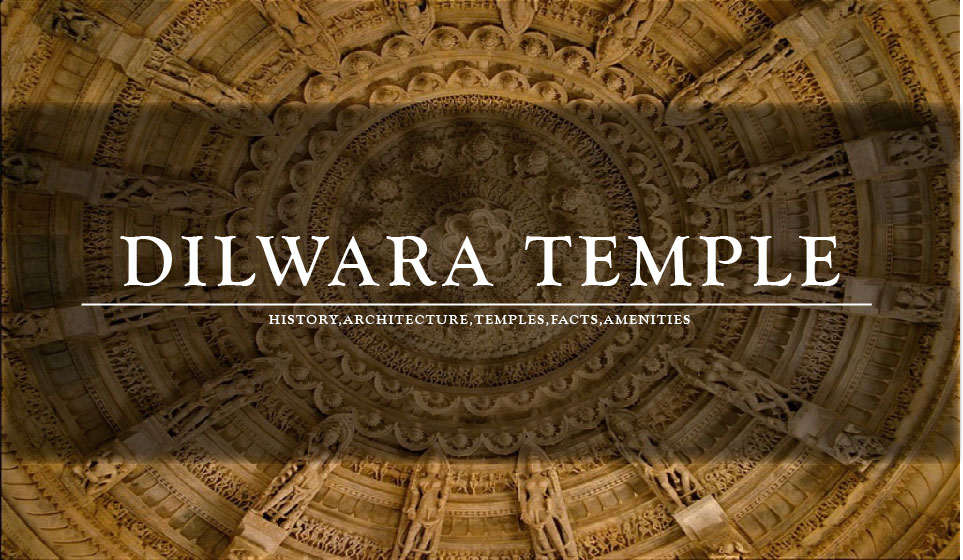Rajasthan, the land of the Desert also hosts a formidable place for mountain lovers-Mount Abu. It is also a hill station graced by Aravalli. Due to its rich heritage and tradition, the city has a strong presence on the cultural map of India. Dilwara Jain Temple is the blueprint of this culture-depicted in its sculpture and architecture. The temple is presently administered by SETHI KALYANJI PARAMANANDJI PEDI.
Table of Contents
Dilwara Temple History
The Dilwara Temple or Delvada Temples are considered the most beautiful pilgrimages sites for Jains. The Dilwara temple is famous for its spectacular use of marble in its making. These temples have a group of Shvetambara Jain Temples located about 2.5km from Mount Abu. The Dilwara temples were earliest built by Vimal Shah and supposedly designed or at least financed by Vastupala, Jain Minister of Dholka.
Dilwara Temple Was Built by Which Dynasty?
The temple was built between the 11th to 13th A.D. by the Chalukya Dynasty. Their temples are in the style of “MARU GURJARA” architecture, famous for their use of very pure white marble and intricate marble carvings.
Dilwara Temple Architecture
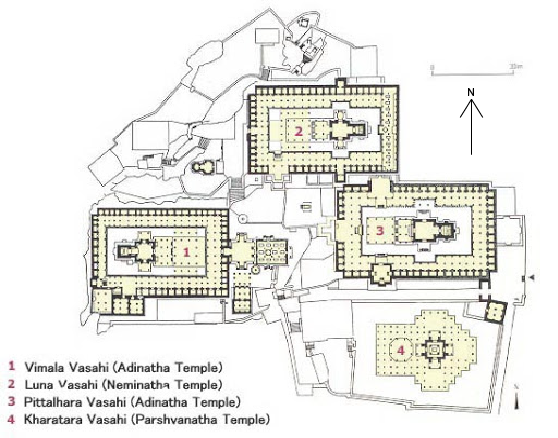
The Dilwara temple architecture style and inspired by “NAGARA STYLE” and a collection of Ancient Manuscripts. Dilwara temples consist of 5 temples of the same size and all of them are single-storied. There are 48 pillars in all the temples that have the beautiful status of females in different dancing gestures. The main attraction of this temple is ‘Rang Mandapa’ which is in the dome-shaped ceiling. It has a chandelier-like structure in the middle of the roof, and the 16 idols of ‘Vidya Devi’, the goddess of knowledge, are made of stone surround it. The other designs of carvings include Lotus, gods, and abstract patterns, all of these ceilings, doorways, pillars, and panels have minutely carved ornamental details which shows its uniqueness of architectural. It is also important to notice that at that time there was no transportation system for such huge big blocks of marble at 1200 meters in height. The Elephants were used to transport white marble on their backs from Arasuri hills at Ambaji to Mount Abu.
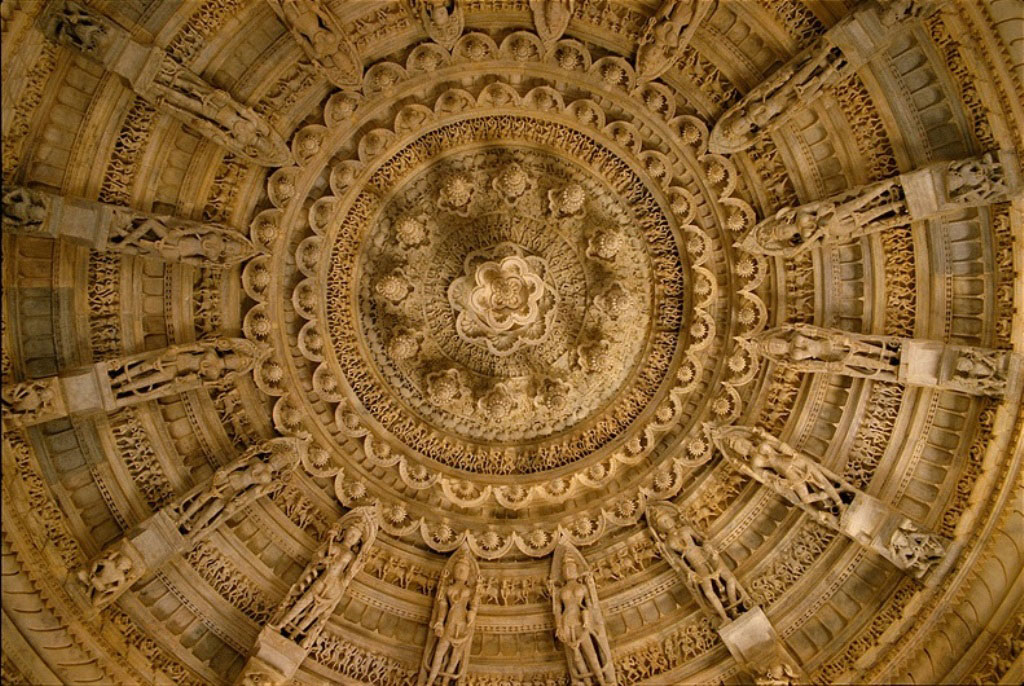
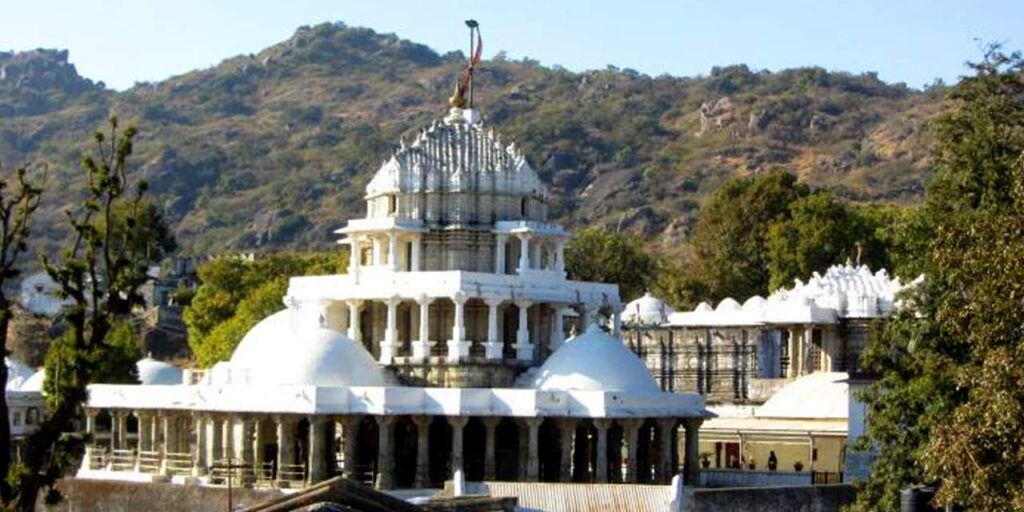
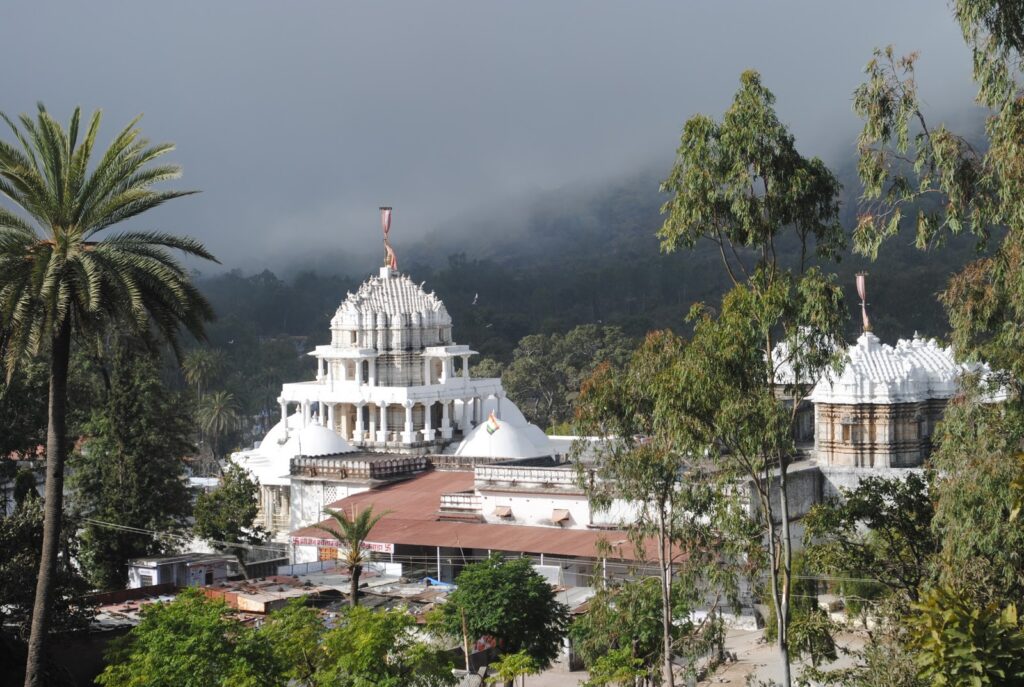
Five Amazing Temples of Dilwara
Dilwara temple complex consists of five different temples, each devoted to five Jain Tirthankara of Jain’s.
1. Shri Adinath or Vimal Vasahi Temple

This temple was built by Vimal Shah, Minister Of Solanikar, ruler of Gujarat in 1031 A.D. This temple is the oldest temple among all the temples and it is dedicated to the first Jain Tirthankar Adinath Ji or Rishab Dev. The Vimal Vashai temple stands in an open courtyard surrounded by a corridor decorated with marble-carved stones. The figure of animal life, life journey from dream to an incarnation of Tirthankaras are carved. Gudh Mandap is the main hall, where the idol of Lord Adhinath resides. It is believed that 1500 Masons and 1200 laborers took 14 years to build the temple and it cost Rs 185.3 Million.
2. Shri Neminath Ji or Luna Vasahi Temple

This temple was built by the two people known as Tejpal and Vastupal in 1230 A.D. This temple is dedicated to the 22nd saint of Jainism- Shree Nemi Nathji Black marble idol of Shri Nemi Nathji among 360 minutely crafted tiny idols of Jain Tirthankar in a hall named Rag Mandapa is amazing to see. The pillars of this temple were built by Maharana Kumbha of Mewar. The temple built-in memory of Vastupal and Tejpal’s late brother Lunig was designed after the Vimal Vasahi temple Arranged in a circular band are 72 figures of Tirthankaras in sitting posture and just below this band are 360 small figures of Jain monks in another circular band. One of the special features of the temple is the two niches of Derani(the wife of a younger brother) and Jethani(the wife of an older brother), the wife of Vastupal and Tejpal.
3. Shri Rishabdaoji Temple or Peethalhar Temple

This temple was built by Bhima Shah, a minister of Sultan Begada of Ahmedabad between 1316-1432 A.D. This temple is also known as Pittala/ Peethala temple because ‘Pitthal’ (Brass Metal) is used in the construction of most statues of this temple. This temple is also called the Adinatha temple. It seems that the construction of Rang mandap and the corridor was left unfinished. The old mutilated idol was replaced and installed in 1468-69 AD. weighing 108 mounds(four metric tons) according to the inscription on it. The image was cast by an artist ‘Deta’ which is 8ft high, and 5.5ft broad and the figure is 41 inches in height.
4. Shri Parshvanath Temple or Khartar Vasahi Temple
This is the tallest shrine among all the Dilwara temples. With 4 big mandapas, the temple was constructed by Sangvi Mandlik and his family 1458-59 A.D. This temple is dedicated to Lord Parshvanath. It consists of a three-story building. On all four faces of the sanctum on the ground floor are four big mandapas housing a Chaumukha idol of Parshvanath. On the first floor, the Chaumukha idol, the front iconography is of Chintamani Parshvanath, second Magalakar Parshvanath, and third Manoratha- Kalpadruma Parshvanath all are depicted with hoods of nine cobras. In the fourth image, Parshvnath is illegible. In the corridors, there is a depiction of 14 dreams the mother of Tirthankaras had before their births. On the second floor, the Chaumukha idol is of Sumatinath, Parshwanath, Adinath, and Parshvanath.
5. Shri Mahaveer Swami Temple
This Jain temple is devoted to Lord Mahaveer, the 24th Tirthankara of Jains. It was built in 1852. It is a small temple with carvings on its walls. On the upper walls of the porch, there are pictures painted in 1764 by the artists of Sirohi, Rajasthan. On each side of Mahavira, there are 3 idols of Tirthankara. Outside the shrine, there is a marble slab of rectangular shape with a triangular stone over it containing 133 images of miniature-sized Tirthankara with a larger image in the center.
Facts About Dilwara Temple
- This complex contains Five Jain temples which are known worldwide for their superb marble craving.
- Vimal Vasahi and Luna Vasahi are the most famous among all the five temples of Dilwara.
- Though a sacred place primarily used for religious purposes yet it has a storehouse inside. Here one can get rare ancient manuscripts of a bygone era. Thus, the Dilwara temple holds a significant influence on scholarly activities.
- Similar to all other architecture of historical importance, Dilwara temple too has seen its share of invasion and aggression. However, it has undergone restoration quite a number of times, some of which are going on to date.
- In 1311, the temple was invaded by the Delhi sultanate ruler Alauddin Khilji of the Khilji Dynasty. 2 artisans from the mandore, Lalag and Bijag did the restoration at that time.
- in 1906 and 1950-65, another fresh set of repairs was done. Lallubhai Jaichand completed the first set of restorations and the latter was done by Anandiji Kalyan Ji.
- The Dilwara temple boasts detailed carvings like the lotus pendant and the concentric ring ceiling which adorn the inner sanctum Vimal Vasahi.
- The carvings make us wonder about the expertise of the artisans of that time. Now, these artisans were quite fortunate to find such a patronizing ruler who encouraged and inspired them to curve out as much as they can.
Amenities
Facilities are available for bathing, which is mandatory before puja is performed for the idols. These facilities use passive solar power to heat up the water for bathing and other things. Guided tour hours for tourists are posted outside the temple. No photography is allowed inside the temple complex.
Dilwara Temple Timings
- Opening Time: 12:00 PM
- Closing Time: 06:00 PM
- Contact number: +91-2974-235151
- No time restrictions for Jain’s
- Open: Daily (*During this pandemic, situation temple is closed.)
Location of Dilwara Temple
How to Reach Dilwara Temple?
Dilwara temple can be easily accessible through the road from Mount Abu (2.5km). Dilwara temple is located in the Sirohi district, Rajasthan & the Geographic Coordinates of this temple are 24o 36‘ 33.5” N 72o 43′ 23” E. It is well connected to Jodhpur (264km) through Sirohi and Pali by Abu-road. The nearest railway station is Abu Road 29km away and the nearest airport is Udaipur (185km).
It is well connected to Jodhpur (264 km) through Sirohi and Pali by Abu-road. The nearest railway station is Abu Road 29 km away and the nearest airport is Udaipur (185km).
Dharamshala And Bhojanshala In Dilwara Temple
- Jain Dharamshala – Double Bed with attached bath Rs.50/- per day & Double Bed without attached bath Rs. 30/- per day.
- Cottages – 3 rooms with attached bath Rs 150/- per day & 2 rooms with attached Bath Rs.100/- per day
- Bhojanshala – 20/- for Each Person
- Contact Number – The Manager (Dilwara Temple, Rajasthan), 02974- 235222
Tips While Visit Dilwara Temple
- Women are not allowed to wear shorts or skirts above their knees. Men are also advised not to wear shorts.
- Taking a bath before performing a puja for the idols is mandatory at Dilwara Temples. A facility for bathing is available inside the premises.
- Guides are available to take you around for free. So, you don’t have to hire one from outside the temple.
- Cameras, mobile phones, belts, etc. are not allowed inside the temple. However, you can take your wallet along with you. There are lockers in the temple to keep your belongings safe. 50 Rs is charged for lockers.
Hence Dilwara temple is one of the best examples of craftsmanship, the genius of carving out such brilliant and intricate a shape out of a block of stone, such that it almost comes to life! The temple is a tourist paradise and a meditative sanctum for the devotees.
Conclusion
In conclusion, the Dilwara Temples are an impressive collection of Jain temples located in Mount Abu, India. These temples, which date back to the 11th and 13th centuries, are renowned for their intricate carvings, ornate design, and white marble construction. A popular tourist attraction, the Dilwara Temples are considered to be a standout example of Jain architecture. Whether you are a devout follower or simply appreciate beautiful buildings, the Dilwara Temples should not be missed.

